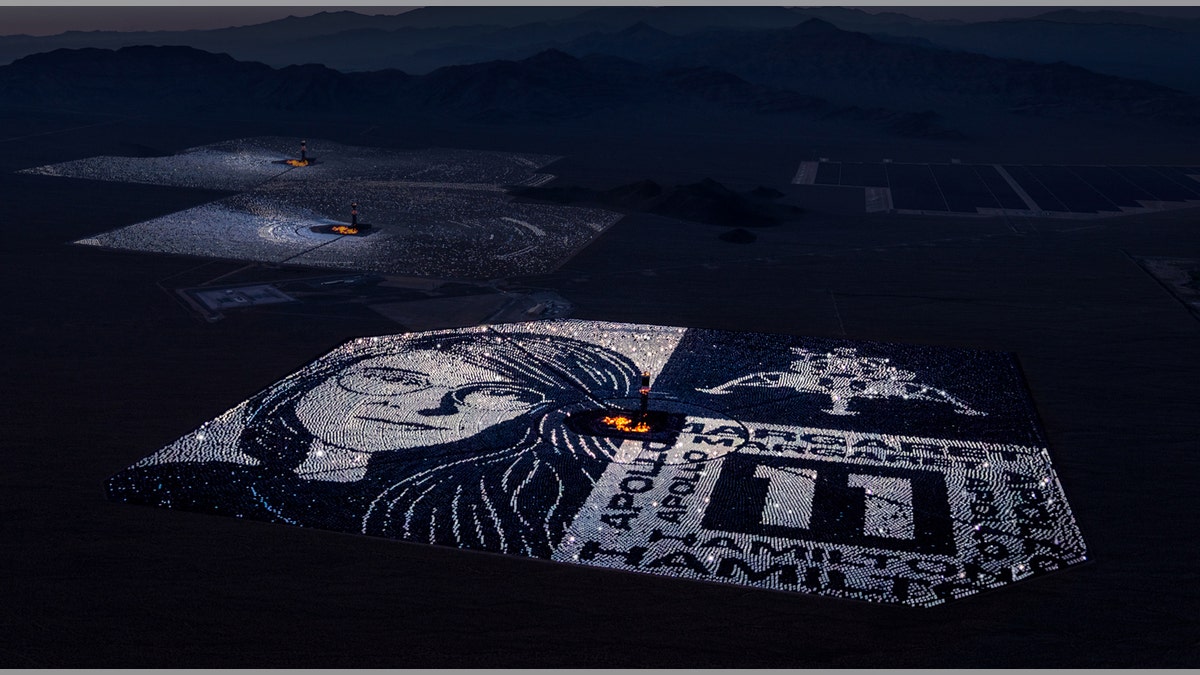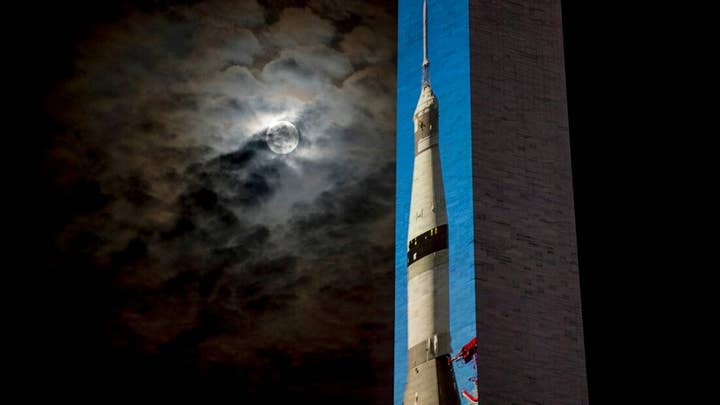Google honors a female Apollo engineer
Google lights up the Mojave Desert, honoring a Software engineer.
As part of its tribute to Apollo 11, Google is using moonlight to dramatically showcase Margaret Hamilton, a pioneer whose computational work helped make the historic mission possible.
The Mountain View, Calif. company built the massive tribute by positioning over 107,000 mirrors at the Ivanpah Solar Facility in the Mojave Desert to reflect the light of the Moon, not the sun, as the mirrors typically do.
The resulting 1.4-square-mile portrait of Hamilton, 82, is breathtaking and larger than New York City's Central Park. The mirrors were reverse-engineered by Googlers to reflect moonlight, and each mirror is about the size of a car.
Hamiton and her colleagues at the MIT Instrumentation Lab, now known as Draper, developed the navigation and guidance systems for the Apollo spacecraft. She led the team that worked on code for the Apollo Guidance Computer, the flight's onboard software.
APOLLO 11: PLAYTEX'S FEMININE TOUCH HELPED NASA LAND ON THE MOON

Margaret Hamilton, a pioneering software engineer, led the team that built the onboard Apollo 11 guidance system. (Courtesy of Google)
APOLLO 11: NEW VIDEO REVEALS LUNAR SAMPLES WERE SEARCHED FOR SIGNS OF LIFE
According to Google, Hamilton described working on the software that put America on the Moon like this: "There was no choice but to be pioneers."
Hamilton's status as a working mom, combined with her natural curiosity, was an asset in terms of her achievements.
"Margaret would often test programs in the simulator, and [her daughter] Lauren liked to play astronaut like her mom. One day, Lauren crashed the simulator after she pressed a button that set off a prelaunch program while the mission was in mid-flight," Google Senior Vice President of Geo Jen Fitzpatrick said in a blog post.
Instead of scolding her daughter, Hamilton wondered what would happen if an astronaut did the same thing during a real mission. She would eventually lobby to add code that would prevent a system crash from happening if he did.
In the moments before Apollo 11 was set to land, the guidance computer was overwhelmed with tasks. Instead of forcing a reboot, the software was reliable and the "priority display" that Hamilton fought to include let the astronauts in mission control know what was happening.
The Eagle was able to safely land, and the rest is history.
Hamilton was awarded the Presidential Medal of Freedom by Barack Obama in 2016.
CLICK HERE FOR THE FOX NEWS APP
Be sure to catch the America’s News HQ Apollo 11 50th anniversary special on Fox News on Saturday, July 20 at 12 PM EDT.






















